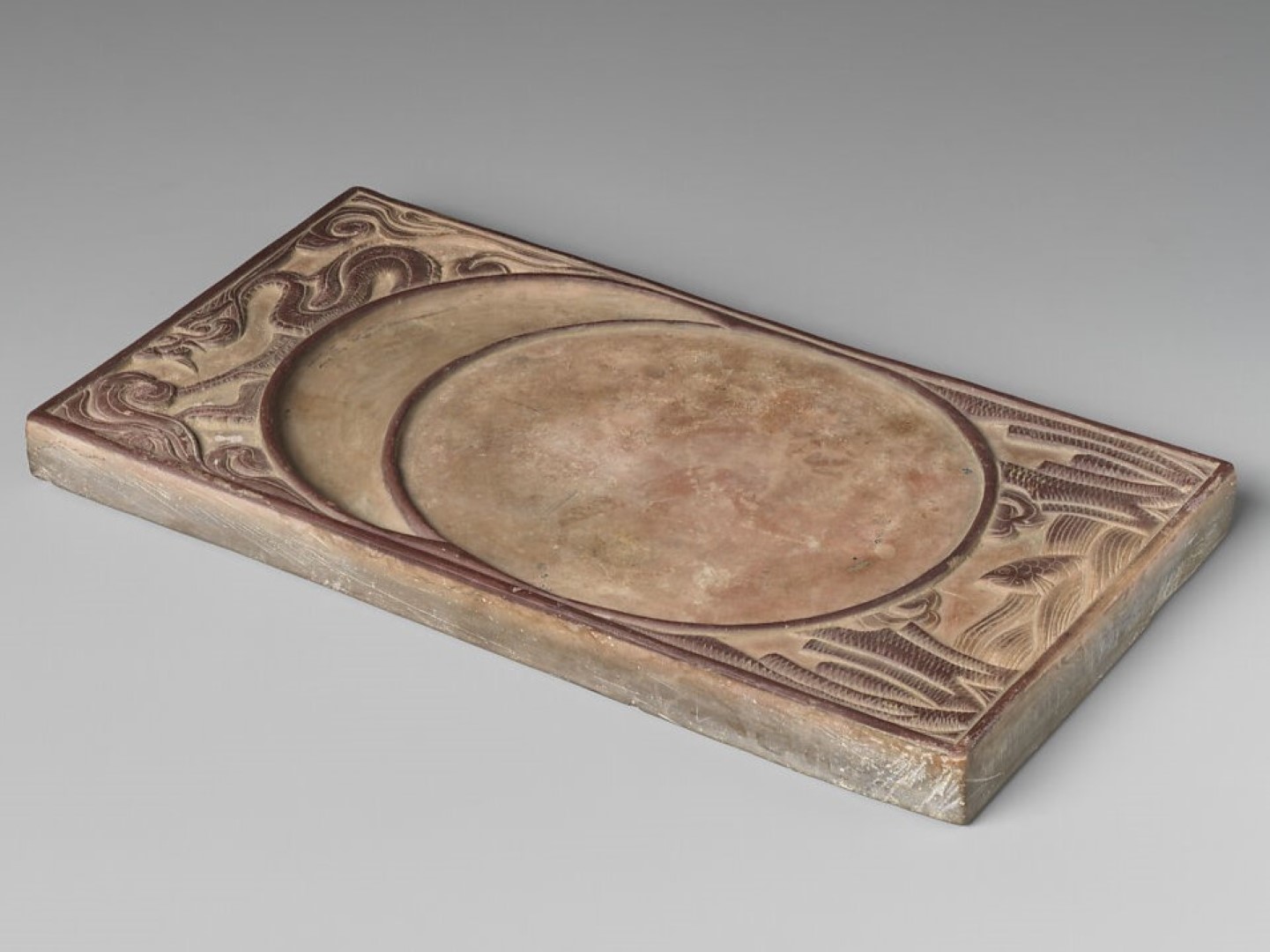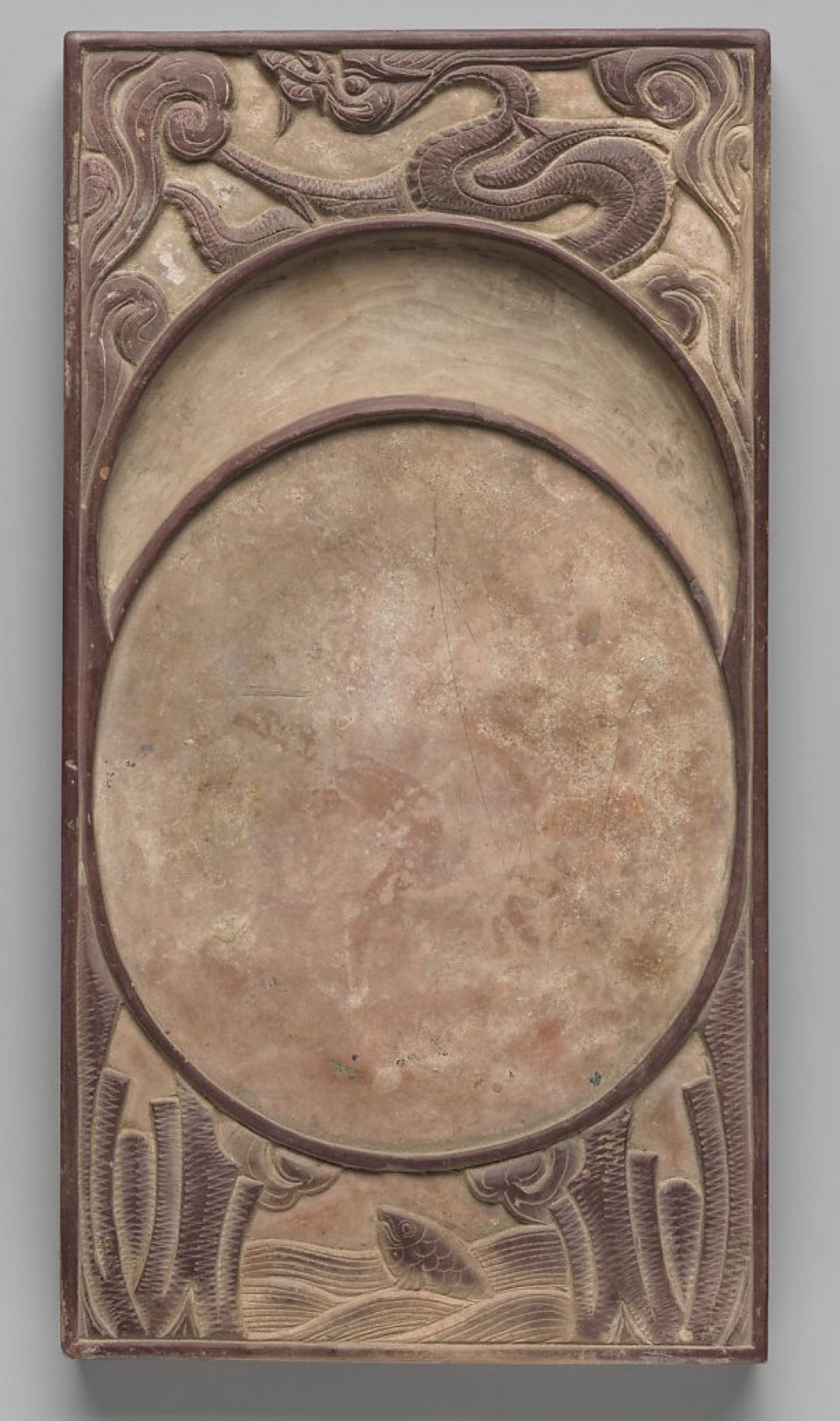
Inkstone with Dragon & Carp
| Categories | Far East / Oriental |
| Type | Inkstone |
| Material | Stoneware |
| Origin | China |
| Date or Era | 14th century |
| Measuring | L. 8 5/8 in. (21.9 cm) |
This stoneware inkstone is part of the Metropolitan Museum of Art’s (NYC) collection of Asian art and dates to the 14th century.
This unusual inkstone is carved from a type of stoneware known as chengni, or “filtered clay.” Made from very fine silted clay that has undergone a labor-intensive process of filtering, kneading, molding, firing, and carving, chengni inkstones became popular during the Song dynasty (960–1279). The vigorous carving style of this piece, however, dates it to the fourteenth century. The inkstone’s decoration invokes the myth that a carp, should it succeed in swimming upstream through the Dragon Gate of the Yellow River, will become a dragon. A metaphor for success on the civil service exam, here, the gulf between carp and dragon is defined by the inkstone and inkwell—whose diligent use might well decide the difference between failure and success.
Content disclaimer. The information posted is the owner’s best knowledge and may not have been vetted by the SOIC. We welcome comments, corrections, and additions, working to make our website information comprehensive and accurate.
Join the Society of Inkwell Collectors (SOIC) – it’s free!
Founded in 1981 as a non-profit organization,
we are documenting inkwells (and accessories).
We’re here to help and inform!

